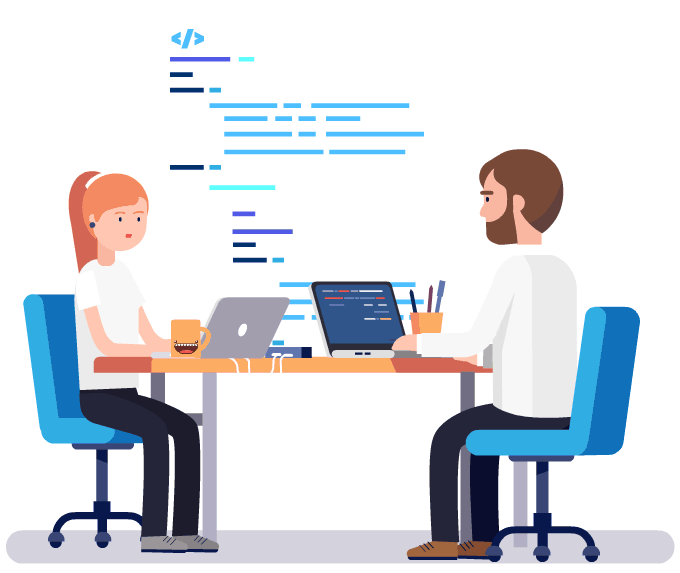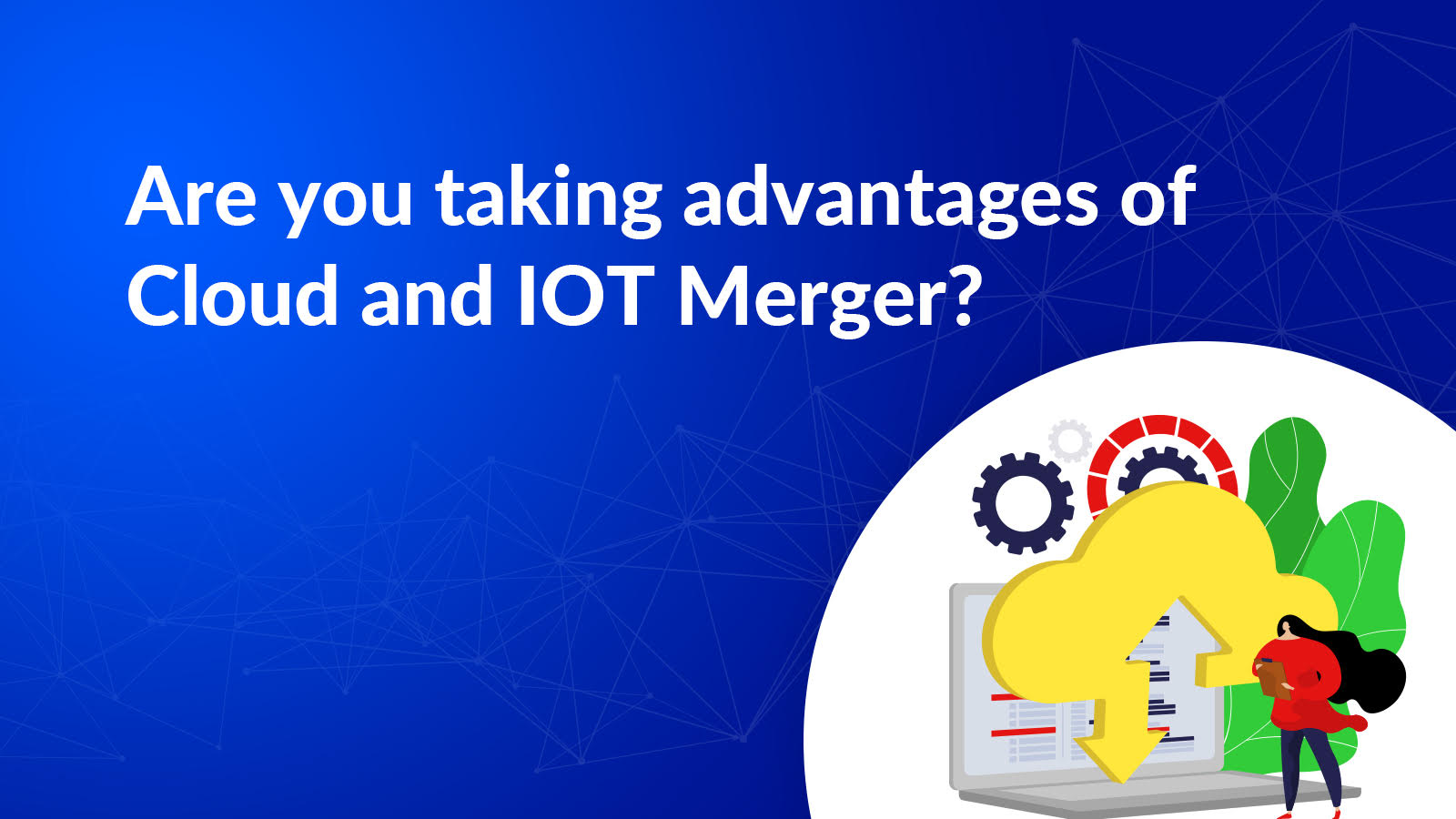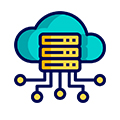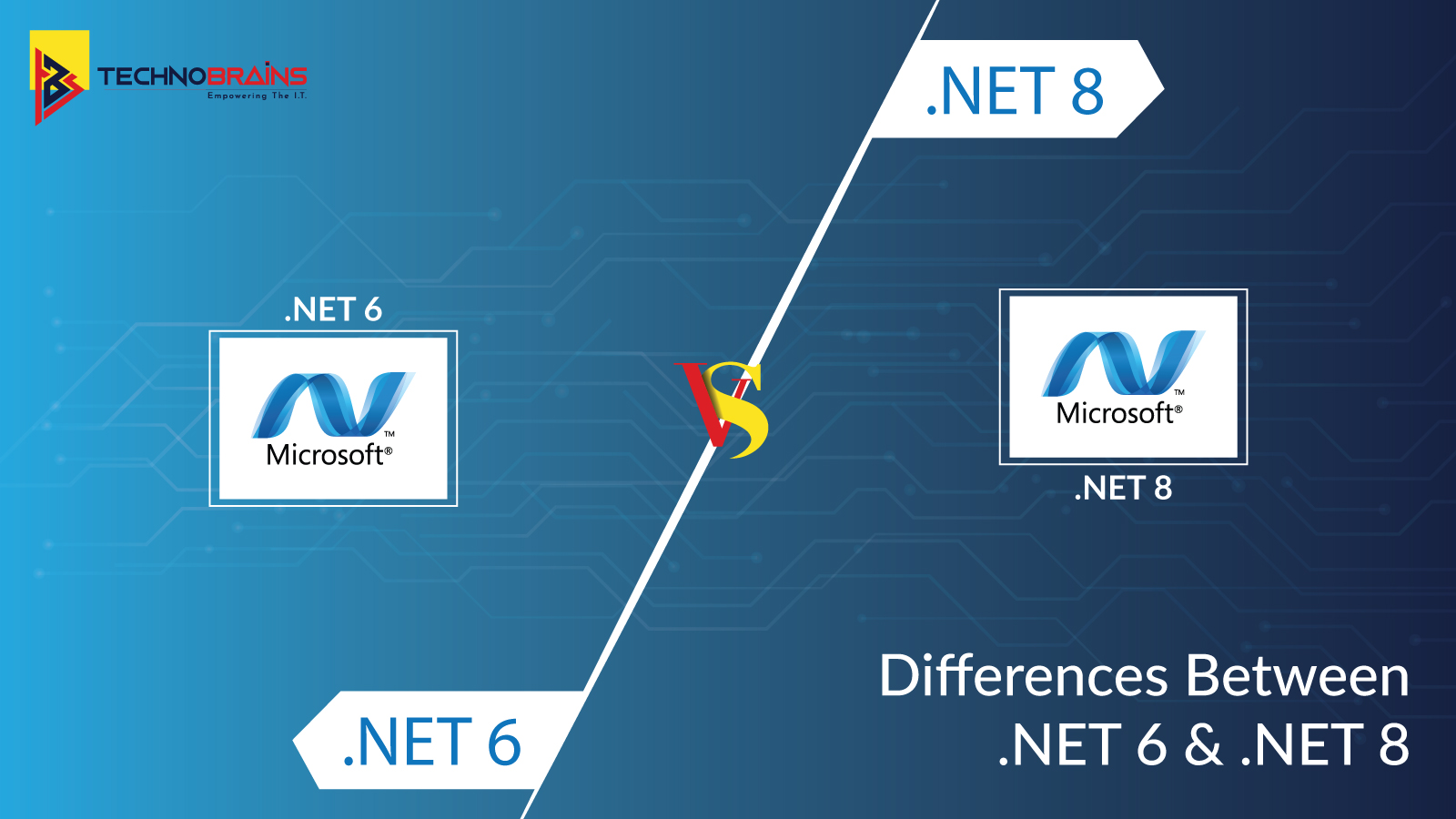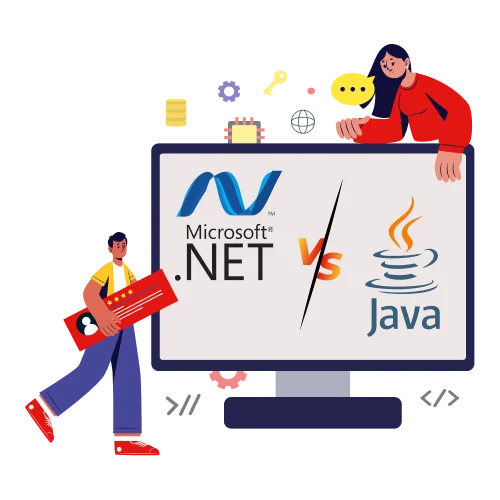Get 40 Hours Free Developer Trial
Test Our Developers for 40 Hours at No Cost - Start Your Free Trial →
The recent pandemic has made the inevitable digital change in the world happen faster. We are changing how we live our daily lives. Thanks to the Internet of Things (IoT), which connects gadgets and sensors. Do you know about IOT and Cloud merger?
Businesses now do most of their work online, where they can meet a wide range of customer needs. It makes IoT the best solution for businesses that want to stay in touch with their customers all the time. The predictions for the Internet of Things are optimistic. By 2025, it is, thought that 75 billion devices will be, connected.
It’s interesting to note that these Internet of Things (IoT) devices don’t offer any major benefits on their own. Instead, the data they collect can be, turned into useful information and help IoT move forward. One thing that can help the Internet of Things work is cloud computing.
Cloud computing services make it possible for databases, computing infrastructure, storage, and applications. That is, needed to process and analyze data points from hundreds of different sources to be, delivered quickly and on demand. Thanks to cloud computing, users can do computing tasks by using services that are available over the internet.
The Internet of Things (IoT) and cloud computing are two ideas we use every day that are very different. When more people start to use and adopt them, they will be important parts of the internet in the future.
The combination of cloud computing and the Internet of Things (IoT cloud-based service) is, expected to create a new paradigm that will be disruptive and open up a wide range of application scenarios.
When the IoT and cloud computing tech stacks work together, they create a lot of value for both businesses and consumers. People often call this combination an IoT cloud platform.
In this article, we’ll look more closely at the cloud and IoT platforms to see how businesses can benefit from combining the two.
Read about IoT advantages in healthcare in our blog in detail.
IoT
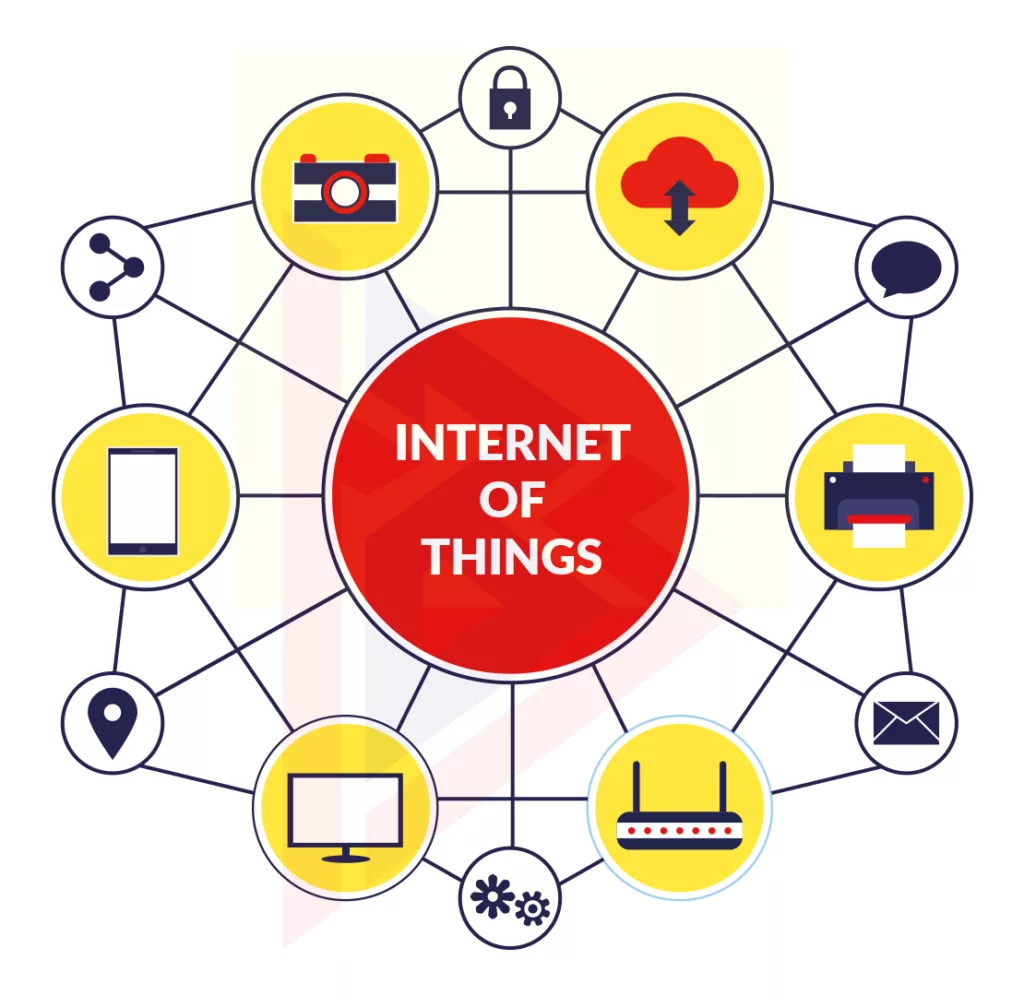
The Internet of Things (IoT) is a term used to describe billions of physical objects connected to the Internet and actively collecting and exchanging data. You can make everything a part of the Internet of Things (IoT), from a tablet to an airplane. Thanks to the development of incredibly affordable computer chips and the widespread use of wireless networks.
By connecting various objects and attaching sensors to them, it has become possible. For these objects (that would otherwise be unintelligent) to transmit real-time data without requiring a human. The world around us is becoming smarter and more proactive thanks to the IoT. Which combines the digital and physical worlds.
According to IoT Analytics, global business Internet of Things (IoT) expenditure reached $128.9 billion in 2020, up 12.1% from 2019. There will be, an increase of 26.7% every year after 2021 for the ‘Internet of Things (IoT). Which describes billions of physical objects that are, now connected to the Internet and actively collecting and exchanging data. IoT (Internet of Things) is, connected to everything, from tablets to airplanes. This is because computer chips have, become very cheap, and wireless networks are, used by almost everyone.
Read about the key skills required before you hire a dot net developer.
By linking different things together and putting sensors on them, things that wouldn’t be smart on their own can now send real-time data without the help of a person. IoT, which brings together the digital and real worlds, is making the world around us smarter and more proactive.
IoT Analytics says that in 2020, businesses will spend $128.9 billion on the Internet of Things (IoT), which is 12.1% more than in 2019. It went up by 24.0% in 2021, and it’s, expected to go up by 26.7% every year after that.
IoT Cloud Computing Platforms
IoT cloud computing platforms combine the features of cloud computing and the Internet of Things (IoT) and offer it as a full-service solution. People also call them by other names, like Cloud Service IoT Platform.
With so many devices connected to the Internet these days, it’s getting easier to collect a lot of data from these sources and use different programs to analyze it well.
The IoT and Cloud merger provides a practical, flexible, and scalable architecture for all the services and infrastructure that businesses with limited resources need to handle all the IoT tools and apps.
IoT clouds let businesses grow quickly and affordably without having to build the infrastructure and services they need from scratch.
How does the merger of IoT and cloud computing benefit enterprises?
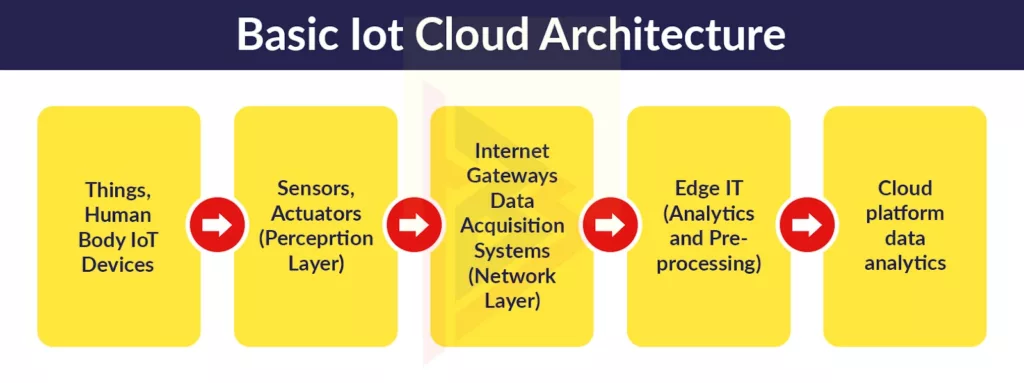
Thanks to the IoT and Cloud merger, businesses have a lot of room to grow. IoT is, the place where the data comes from, and cloud computing is, how the data is, stored.
But how do these two work together to bring about the digital transformation of the business? Let’s explore.
Effective data integration
Businesses started using IoT as part of their data strategy to give their current reporting systems real-time data, more information about how the business is doing, and better visibility into business sectors that weren’t available before.
Companies are learning that the features of IoT data are different from those of traditional enterprise data. This is, because IoT data is, made up of data from traditional business applications as well as data from sensors and connected equipment.
If an organization isn’t ready for this kind of data, its speed and volume could be too much for them to handle. Since it represents different types of information that might not have been in the original design, it also requires a little bit of re-architecting of data models.
In this case, cloud computing can help. Because the cloud can hold a huge amount of data, companies can process and store data from both their corporate systems and IoT devices in the same place. Businesses can grow by using the cloud as a great place for all their different systems to come together. Organizations can get rid of the need for system integration and audits if they store their data together instead of separately. Thus, the IOT and Cloud merger is a great boon for them.
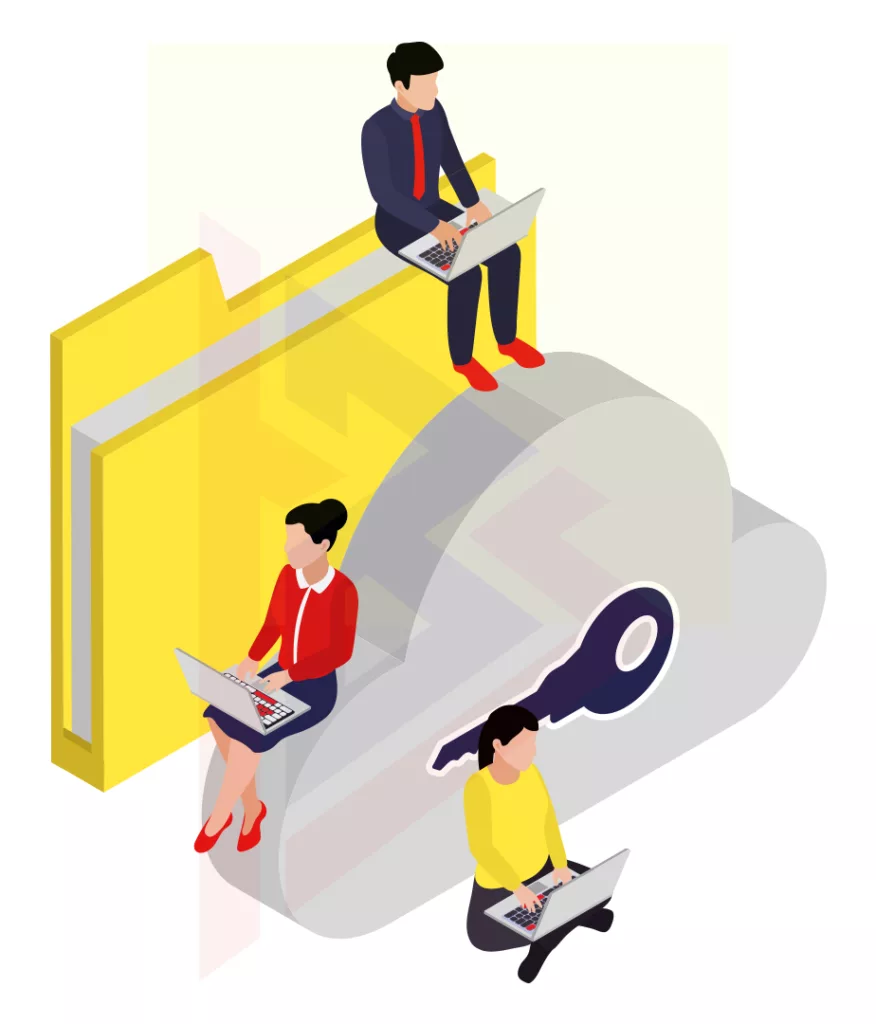
Better security and reliability
Even though many people still worry about cloud security, recent moves by the top cloud providers have started to change their minds. IoT cloud providers like Amazon and Microsoft have thousands of security experts, while most businesses only have one or two. The huge security teams are, also required to use best practices, follow industry standards, and get the right certifications.
If you want to use a cloud solution with your IoT deployments, you can trust that it is safe. As the cloud becomes more trustworthy, it also makes it easier and safer for businesses to talk to their Internet of Things devices.
Know the cost of developing a .NET Application, in our article here.
In a similar way, cloud systems are, constantly audited so that cloud providers can give their clients easy access to information about performance and security. With this data access, businesses can make sure that thousands of IoT devices work well and are safe.
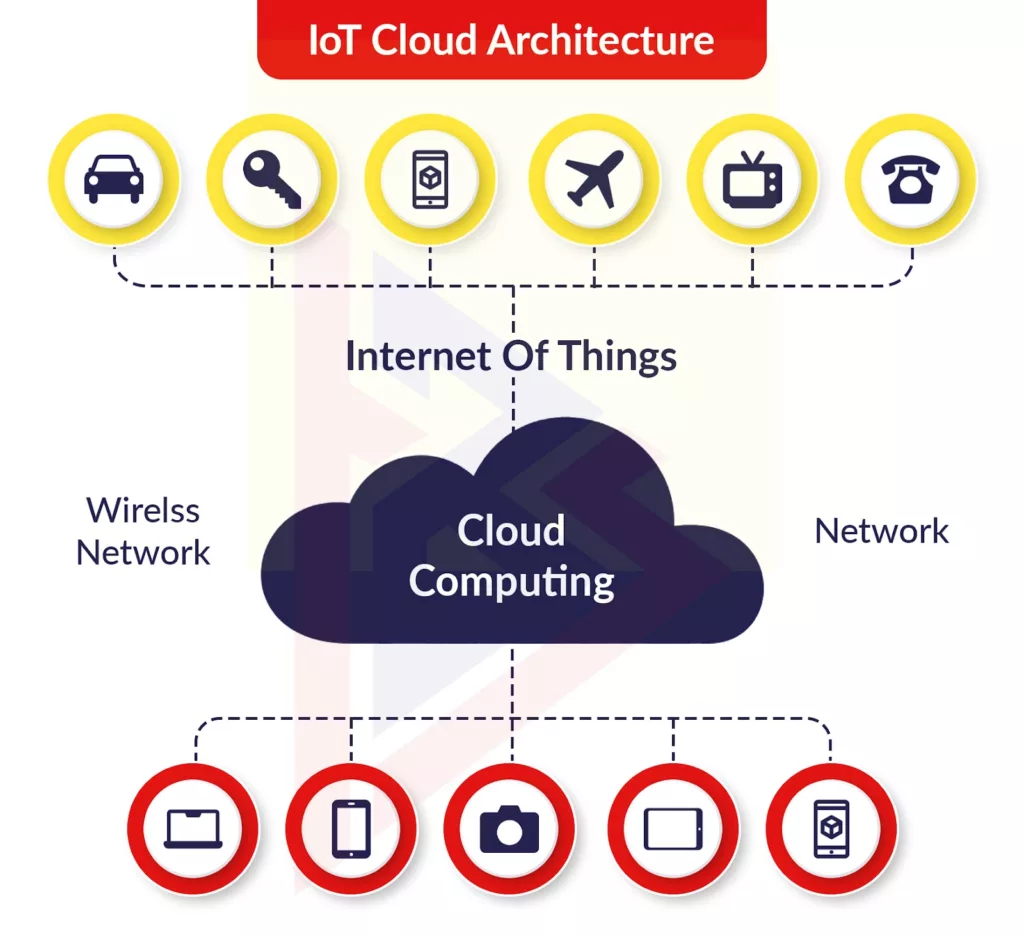
Time to market
Most of the time, it takes less time and effort to set up an IoT cloud platform, and the overall cost is also much lower. However, platform customization has to be given up in order to do this.
Internet of Things systems that are installed on-premises are easier to tailor to the needs of a project, but they require time-consuming implementation of data management and analysis functions as well as upgrades to the business’s existing network framework due to increased data traffic.
Overall, cloud-based IoT infrastructure is more profitable when the time to market is a key part of a business.
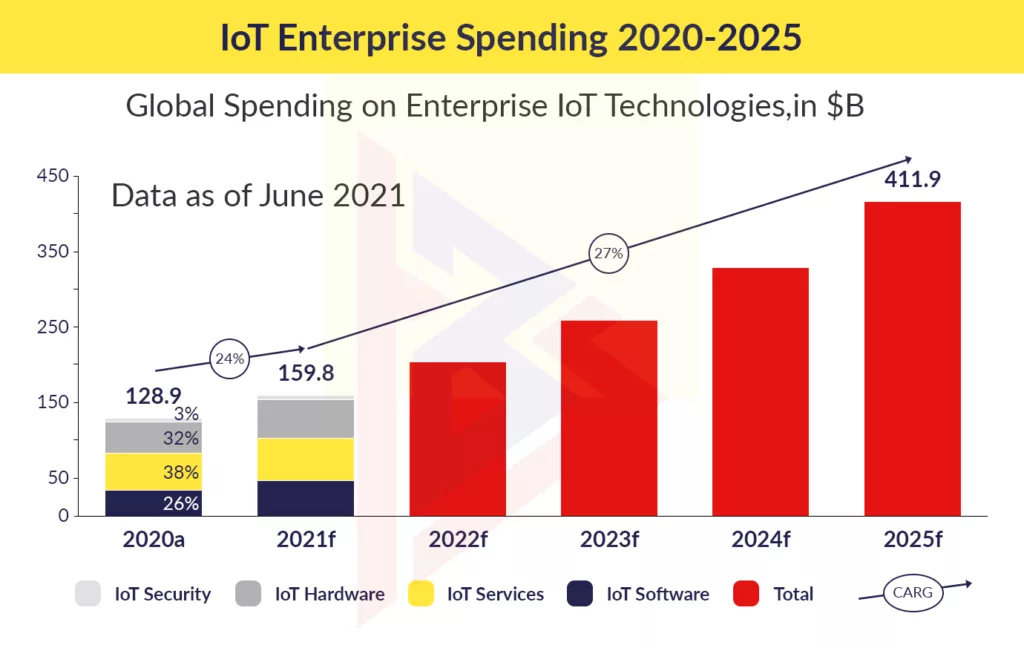
Improved collaboration
With IoT device data saved in the cloud and accessible from anywhere by registered employees, different parts of an organization can work together smoothly. Because of this, the employees’ interest, efficiency, output, and sense of working as a team will also go up.
Disaster recovery
Data loss and other IT disasters are also likely to happen. Cloud computing and the Internet of Things, in general, make it easy to recover data quickly after any kind of emergency, such as a natural disaster, a mistake made by a person, or a power outage.
A survey found that 20% of cloud users said they could recover from a disaster in 4 hours or less, while only 9% of users who did not use the cloud could say the same.

Reduced barrier to entry
IoT innovators look for hosting options that are easy to use. When this happens, cloud hosting options are a great choice. With cloud hosting, IoT players can use the power of remote data centers without having to set up complicated hardware and software on-site. Some cloud services also use a pay-as-you-go business model, where the user only pays for the resources they use. So, businesses can avoid having to pay big fees upfront.
Most IoT-based businesses are finding, it easier to get started because of the rise of cutting-edge cloud hosting solutions, which make it easy for them to start large-scale IoT projects.
Efficient data mobility
When it comes to IoT projects, mobility is very important, especially when it comes to the administration, monitoring, and management of connected devices in real time. With a cloud platform, you can set up, manage, and update your sensors and devices. It lets businesses analyze incoming data from anywhere and in real time, unlike on-site servers that can only be, used inside the company.
If your data is, processed and stored on a cloud server that can be, accessed from almost anywhere in the world, it won’t be, limited by infrastructure or networking.
High scalability
One of the best things about putting your Internet of Things system in the cloud is that it can grow as needed. In order to scale up on-premise network infrastructure, more hardware must be purchased, more time must be spent, and more work must be done.
On the other hand, adding new resources to a cloud-based IoT system usually means renting an extra virtual server or more cloud space, both of which can be, set up quickly.
Also, cloud Internet of Things platform services give you more freedom if you want to reduce the number of IoT-enabled objects or the amount of storage space you need.
Reduced costs
Adopting an Internet of Things system on the inside of a business can be hard because of the high costs and higher risk of deployment. Also, there is the problem of always having to pay for IT staff and hardware maintenance.
From the cloud Internet of Things, things look much better. Businesses that use the Internet of Things (IoT) are, encouraged to move to the cloud. Which has much lower costs upfront and a flexible pricing model based on usage. With this business model, it’s, easier to estimate costs, and you won’t have to worry about equipment failures. This can lead, to a lot of extra costs and economic losses with the Internet of Things systems that are, used internally.
How can TechnoBrains help your business grow?
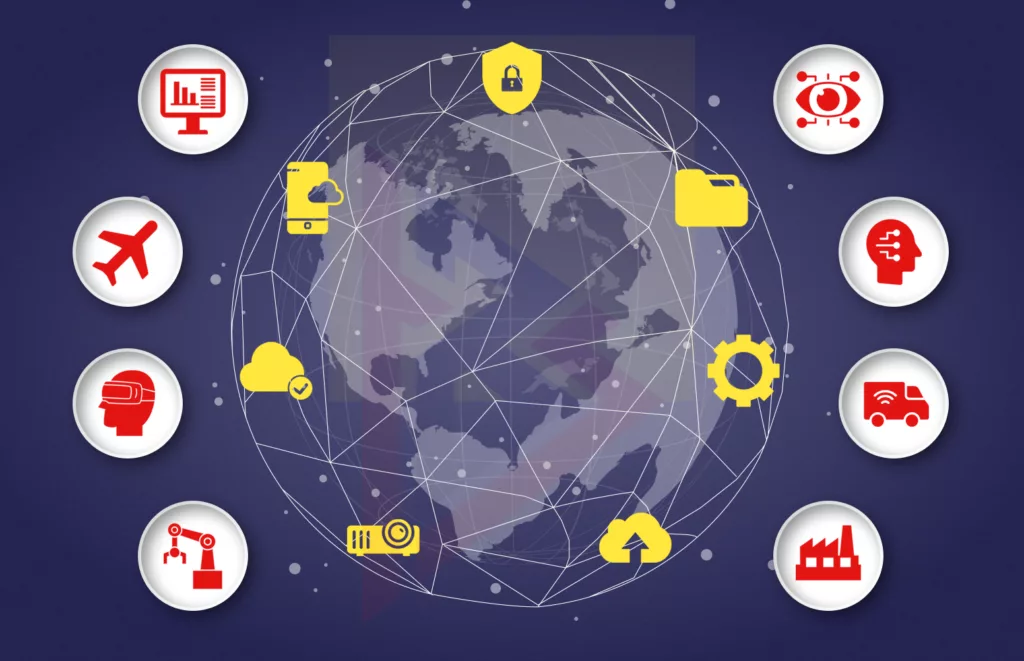
When IoT and cloud computing are, used together, it opens up a world of possibilities for businesses. IoT and cloud computing services give businesses more ways to connect, solutions on demand, better ways to work together, and better security, all of which help with digital transformation. So, for businesses to get the most out of IOT and Cloud merger, they should use them as soon as possible at work.
By choosing the right cloud strategy partner, your company can stay flexible as the IT world changes all the time. TechnoBrains makes sure that organizations use all of the benefits of the cloud, such as lower costs, faster delivery, increased productivity, high reliability, security, and more, by offering quality cloud consulting services.
By working with AWS, Azure, and Google Cloud Platform as our committed cloud partners, we make it easy for our customers to move to the cloud ecosystem.
Let TechnoBrains help you reach your goals. Contact our experts!
Wrapping up!
In the end, the Internet of Things and cloud computing will change, everything about how people live, especially how data is, managed. Depending on how IoT data is, used, the cloud is the only technology that can be, used to evaluate, store, and get IoT data.
Since on-demand data is, what makes cloud computing possible, it can be, used anywhere there is an Internet connection. Many businesses are starting to understand the benefits of hybrid cloud computing and why they need to use it. IoT will keep getting more options thanks to cloud computing. So, are, you prepared to take advantage of IoT and Cloud merger?
FAQs
Q. IoT clouds: what are they and what are their benefits?
A. Thanks to cloud computing, IoT devices can talk to each other without any trouble. So, smart devices and devices that are, connected to the internet can talk, to each other using a variety of reliable application programming interfaces (APIs). Cloud computing makes it possible for technologies to work together in this way.
Q. For IoT solutions to function, do they need to be cloud-based?
A. Even though the Internet of Things (IoT) could work without the cloud, it makes sense to think that cloud computing makes it possible for many IoT devices to work much stronger and more efficiently.
Q. Cloud storage for IoT – what does it mean?
A. A cloud provider is a company that manages and runs data storage as a service. This company offers cloud storage, which is a way to save data on the internet. It gets rid of the need to buy and manage your own data storage infrastructure. Because it is available on-demand and has just-in-time pricing and features.
Q. How does the Internet of Things use cloud infrastructure?
A. There are three ways to use the cloud for IoT: IaaS (Infrastructure-as-a-Service), PaaS (Platform-as-a-Service), and SaaS (Software-as-a-Service) ( SaaS ).
